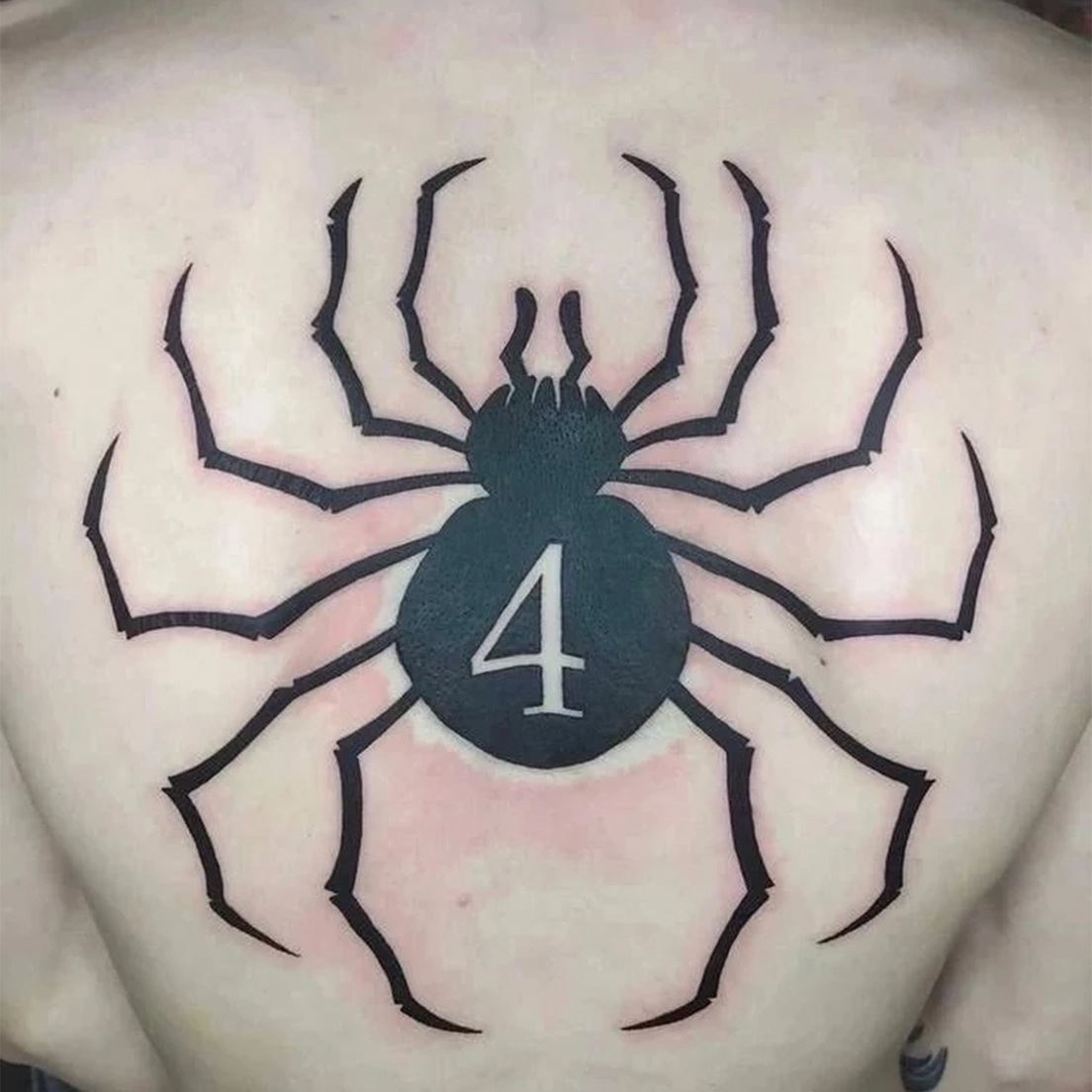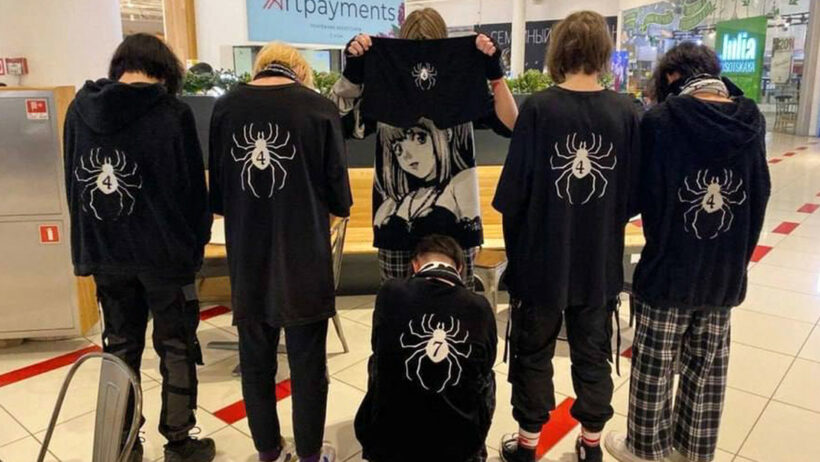The trend emerged on networks, inspired by the anime series ‘Hunter x Hunter’.
In recent days, a series of fights provoked by teenagers claiming to belong to a new informal subculture called CHVK Ryodan have been recorded in several Russian cities.
The scuffles, unleashed by members of this community mainly in shopping malls, led to arrests and police raids in several cities across the country.
At the same time, the movement’s ideas spread rapidly in Ukraine, whose officials were quick to blame Moscow for “provocations”.
Who are they?
The movement emerged on networks and was inspired by an anime series ‘Hunter x Hunter’. The subculture’s name comes from the criminal group Spiders that stars in the cartoon.
Although the group carries the acronym CHVK, which in Russian means private military company, it has nothing to do with war groups and was added as a joke.
The group’s symbology includes black T-shirts, plaid trousers, long dark hair, as well as clothing containing an image in the form of a spider with 12 legs and the number 4. A website for comic book fans explains that the number 4 is an omen of misfortune, as in the Japanese language this number is consonant with the word death.

In their social network communities, those associated with Ryodan do not offer clear positions on the aims of the movement. Some participants claim that the subculture does not propagate violence, nationalism or hatred, while other posts suggest that supporters are against migrants, people from the Caucasus, as well as football fans.
Meanwhile, movements opposing the Ryodan are gaining strength, mostly sports fans and football fanatics who beat up Ryodan youths and film their abuse.
How did the Ryodan gain popularity?
The movement came into the media spotlight on 22 February, when a video of Ryodan members fighting with other teenagers in the Aviapark shopping centre in Moscow went viral.
The Russian Investigative Committee launched an investigation into the incident. A few days later, police detained nine alleged participants in the brawls, blaming them for hooliganism, the Mash channel reported.
The following day, unknown assailants beat up a teenager and pepper-sprayed him in the face at Moscow’s Lubyanka metro station. Police arrested four individuals in connection with the attack, including three minors, and opened a criminal case for hooliganism, reports TASS.
Another clash occurred on 26 February between teenagers aged 14-17 in a St Petersburg shopping centre over differences in clothing tastes. Local portal Fontanka reported that law enforcement officers had to intervene, taking nearly 220 individuals to the police station.
Following this, police forces in different parts of the country (Kazan, Novosibirsk, Krasnoyarsk, Yaroslavl, Rostov-on-Don) carried out a series of operations against teenagers wearing the movement’s insignia.
To get an idea of the scale of the trend, it is worth mentioning that on 27 February TASS reported, citing a source in the security forces, that on 24 February 226 people, including 188 teenagers, who were going to stage a brawl near the Aviapark shopping centre and the CSKA metro station, were detained. “They are representatives of two rival youth currents. Thirty-seven of them were in possession of gas cartridges, knives and ‘airsoft’ guns,” the informant said.
Ryodan in Ukraine
The popularity of the CHVK Ryodan also spread to Ukraine, where there were rallies of the subculture’s followers in cities such as Kiev, Ivano-Frankvosk, Odessa, Kharkov and Vinnitsa, reports Strana.ua.
Mass brawls were avoided in all cities, but in Kharkov police took 257 individuals, almost all of them teenagers, to the police station and seized steel knuckles, knives and gas cartridges.
Kiev and Moscow exchange accusations
For its part, the Kiev police accused Russia of being behind the rallies held by members of this subculture. “Recently, a youth movement spread in Russia, the participants of which organise fights with opponents. A similar action was planned in Kiev. The conflict was averted, the teenagers were taken to the police station. It is an attempt by Russian propagandists to perpetrate another computer-psychological operation and use children to destabilise the internal situation in Ukraine,” the agency said.
Meanwhile, from Russia, voices were raised in opposition. State Duma deputy Vasiliy Piskarev urged to find out if representatives of unfriendly countries are behind the movement with the aim of “destabilising the situation”.
“It brings nothing good for our youth”
Meanwhile, the Russian Federal Service for Supervision of Telecommunications, Information Technologies and Mass Media (Roskomnadzor) is studying materials linked to CHVK Ryodan, the daily Vedomosti reported, citing a source in the body.

Telegram / Chvkredantg
In turn, Russian presidential spokesman Dmitry Peskov said at a press conference on Tuesday that the Kremlin paid attention to cases related to the subculture. “It is important to prevent illegal actions. It is rather a pseudo-subculture that brings nothing good for our youth,” he commented.
Subculture or interest club?
Meanwhile, psychologist Leonid Armer stressed that there are still not enough elements to classify Ryodan as a subculture, which is why he called it an “interest group”. “We see the emergence of a new pair of clashes as it has always been, for example, between emo and punk,” he told the local portal Chita.ru.
The anti-Ryodan movement is also spreading, he said. “Judging by the number of online videos with beatings, they [Ryodan] themselves are being persecuted. Arrests are now linked to fights, i.e., disputes between teenagers. So far, we have seen no reports of children causing disturbances,” Armer said.










